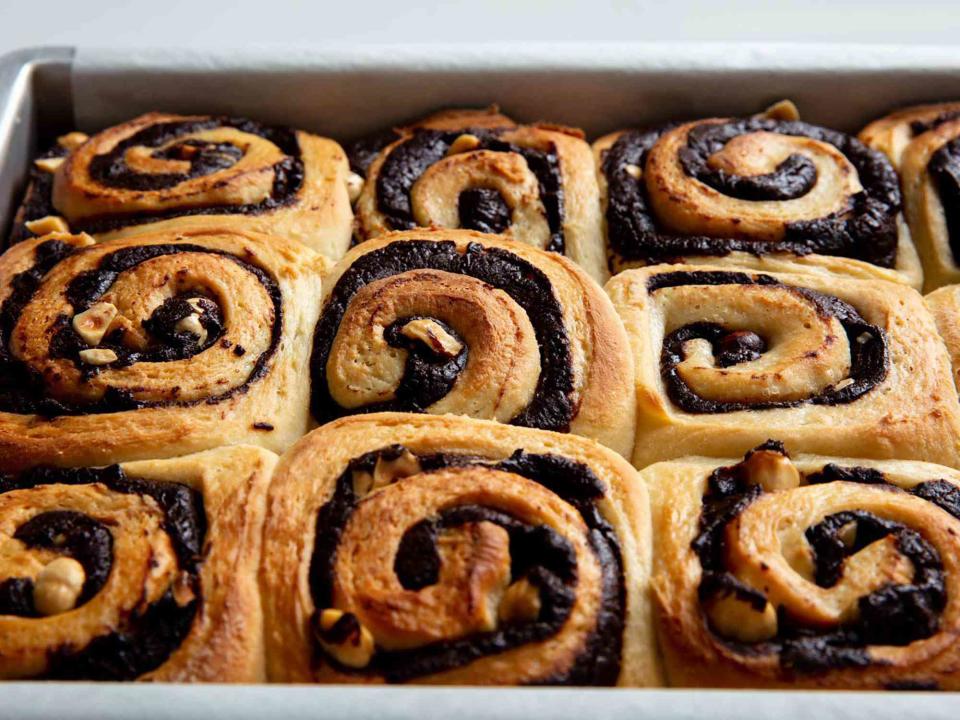Should You Put Your Food in the Oven While It’s Still Preheating?
The answer is a bit...nuanced.

This summer has been especially hectic for me, and whenever I’m roasting veggies for lunch or dinner, I’ve found myself putting them in the oven while it’s still heating up in an attempt to cut down on cooking time. But then in the shower the other day (AKA where I do my best thinking), I had a realization that maybe this isn’t the greatest idea, because maybe it screws up the total cooking time and cooks the food unevenly. Or maybe it’s ok with simple foods like veggies, but unadvisable with trickier things like meats?
The verdict? “Preheating the oven before putting the food in the oven is usually only necessary with foods that need to start with a certain level of heat right from the start,” says Claudia Sidoti, chef and restauranteur.
And what are such foods? Here, Sidoti and Ian Rynecki, executive chef for Pippin Hill Farm & Vineyards in Charlottesville, Virginia, break it down.
Vegetables
Let’s begin with the food that started this whole debate: veggies. Although exact oven temperature is not as important with veggies compared to other dishes (more on those later), it’s still a good idea to fully preheat your oven before sticking in your sheet of produce, says Ryneck. “Other chefs may disagree with me,“ he caveats, “but this is my recommendation if you want the best tasting outcome.”
Related:How to Roast Every Vegetable
He even takes it one step further. “I would also put the sheet pan in the oven as it preheats,” says Rynecki. Then, when the oven has reached the correct temperature, “pull out pan, pour on the veggies and hear them sizzle.” The hot pan rapidly brings up the temperature of the veggies, which ultimately helps them caramelize better. That’s important because “the caramelization is the flavor,” he explains. So while my sticking-the-veggies-in-while-the-oven-is-still-heating trick may certainly have saved me some time, Rynecki validates, it came at the cost of flavor.
Egg Dishes
Anything with eggs—like strattas, frittatas, quiches, and so on—warrants a preheated oven, says Rynecki. Just like you wouldn’t begin hard boiling an egg in cold water, you wouldn’t want to put a baked egg dish into a cold oven. The reason baked eggs need a high starting temp: “A low temperature at the beginning won’t allow for the fluffiness to occur,” says Rynecki. A baked egg dish without the fluff? No. Just no.
Related:These 12 Easy Baked Egg Recipes Are a Lazy Cook's Dream
Bread
Bread is another example of food that needs a properly preheated oven. When you put bread dough into a preheated oven, that quick hit of heat helps to complete the yeast’s rising process, says Rynecki. Sticking bread dough into a cold oven that gradually heats up will produce bread that is still edible, but not as delicious as it could be, he says. A fully preheated oven provides that “last 5 percent” that can elevate good bread to great bread.
Related:How to Make Bread, Whether You're a Beginner or an Expert
And in general, anything that needs to rise—bread, biscuits, egg dishes, etc.—will require a fully preheated oven, says Rynecki. So put your patient pants on if you’re attempting such recipes.
Pastries
All forms of pastry should be placed in the oven when — and only when — it’s at the exact required temperature, says Rynecki. That’s because these items rely on an initial blast of heat to help cook them evenly and also fluff-slash-rise properly.
Take biscuits, for example. If you stick a tray of biscuit dough into a not-yet-hot oven, the bottoms will get burned before the tops are fully cooked because the heat didn’t hit them evenly and instead came up slowly from the bottom, Rynecki explains. A burned-yet-gooey biscuit sounds both terrible and wholly confusing.
For another unsettling example, let’s consider cookies. “If you add something like cookies into a colder oven, they’ll come out flat and dry,” says Sidoti. That (almost) sounds worse than the botched biscuits.
Meats
In general, roasts that are going into the oven for a long period of time and a low temperature (say, 310 degrees and below), don’t require preheating, says Rynecki, since the cooking process is more about “low and slow” than delivering a quick, hot blast. In general, it’s also ok if you do want to preheat the oven for these items. “It won’t make much of a difference,” he says, “as the total cook time is fairly long and the oven temperature is relatively low.”
The exception: braised meats. Bringing up the heat slowly by sticking your meat in the oven and then turning it on helps the meat fibers break down at a better rate than if you were to stick the meat into an already hot oven, explains Rynecki.

